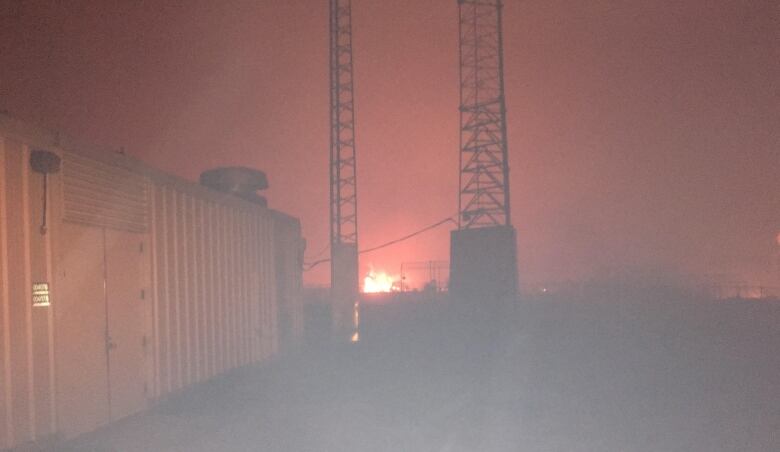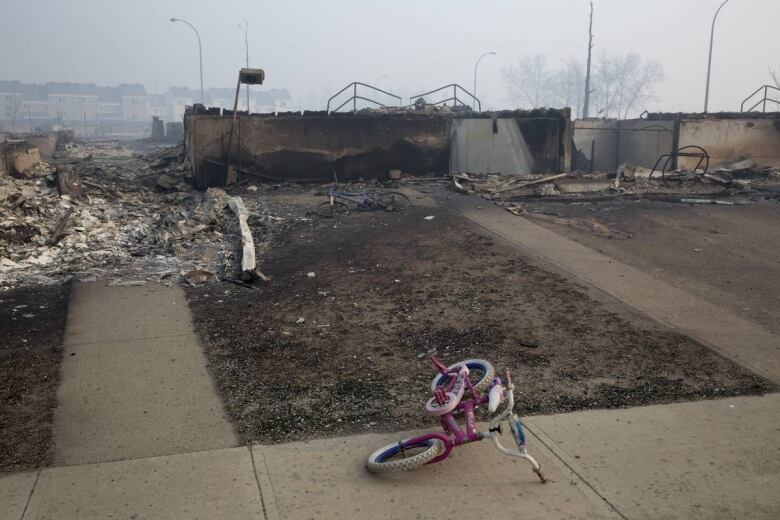Fort McMurray water technicians stayed behind to save vital service
'We care, and it's hard to stop caring, we know keeping the water going is important'

In a disaster, you find heroesin the most unlikely places.
As 80,000 people abandonedFort McMurrayearlierthis week,GeorgeMuirheadstayed behind to manhis post.
With a raging wildfire already burning homes and the city under a mandatory evacuationorder, Muirhead packed his vehicle.
Then he made his way tothe water treatment plant near theAthabascaRiver.
Many of the plant's employees had already fledwith their families, leaving a skeleton crew of nine men to continue their vital work, providing thewater firefighters so desperately needed as they fought to save the city.
- Alberta commits $100M to help Fort McMurray's displaced residents
- Fort McMurray exodus: Convoy of evacuees get 1st glimpse of fire-ravaged city
- Fort McMurray residents face long wait as fire crews 'still have a long way to go'
Muirhead, autility treatment technician, worked around the clock until Wednesday afternoon, when flames began to threatenthe plant itself.
For a time,the crew was forced to evacuate to an oilsandscamp north of the city. But hours later, underpolice escort, theyreturned to the plant.

"The fire had come to the water plant, burned the hillside just across from us, and had burned all around the perimeter of the water treatment plant itself," Muirheadsaid.
"And for some reason, some way, it decided to not hit our river intake structure, where we pull the water in from the river."
At one point, the firefighters who saved the plant sat on the tailgate of their fire truck, completely exhausted.
"You could tell they had worked tirelessly to do what they can to mitigate the fire around that plant and save it," Muirhead said. "And then we come in immediately after to try to keep the water goingfor them."
Exhausted workers keep reservoirs full
Even as trees burned 50 feet from their control room window, and the entire plant filled with thick smoke, the nine workerscontinued to do their jobs. They wore dust masks, only removing them in the control room, which has an air purifier.
The work is technical and requires critical thinking, Muirhead said. But thinking two, three, 10 or 20 steps ahead becamenearly impossible, given they could grabjust an hour or two of sleep over long stretches of time.
We know keeping the water going is important for the firefighters, and we're there for them asmuch as they're here for us.- George Muirhead, water treatment plant operator
Keeping water reservoirs full in every area of the city isimpossible, he said, especially in hard-hit areas like Abasand and Beacon Hill.
"We are called essential services. I can't speak for all of us, or all people in the water industry, but we kind of take that to heart," Muirhead said.
"We care, and it's hard to stop caring. We know keeping the water going is important for the firefighters, and we're there for them asmuch as they're here for us."
The crew lost control of some water facilities atthe main plant and had to drive through the city to run equipment manually. They drove past burning buildings in Beacon Hill and Abasandas embers fell around them, he said.
'Nobody's trying to be a hero'
Muirheadfinallyleft Fort McMurray for Red Deer two days ago. Five operators remain at the plant, alongside two foremen and the plant manager,he said.
On Friday, Calgary announced it wouldsendthree water treatment operators and one process engineer to help the remaining crew.
Muirhead has been logging into the plant's computer system remotely to help with operations. He's monitoring the plant from afar and lending support over the phone to those who remain there.
- Edmonton rallies around Fort McMurray fire evacuees
- Fort McMurray wildfire creates its own lightning
He can still tell how much water is being pushed out the distribution system to fill reservoirs and pumps, and sees data coming back in. He knows which parts of the system remain operational.
Nonetheless he said he feels bad about leaving his team, even though personal reasons forced him out.

Like the child's bike that, somehow, remained mostlyintact while everything else burned to rubble around it a glimpseofthelife that once filled the cityand the longrebuild ahead.
"Nobody's trying to be a hero,"Muirhead said. "Ifwe can ... keep that water going for those firefighters, save those houses, those treasured moments, treasured memories for those people ...they can come back to those homes and their children's stuff is still all there.
"We need water, the city needs water, the firefighters need water. We've got to keep it going. Aslong as we can."
With files from Janice Johnston












_(720p).jpg)


 OFFICIAL HD MUSIC VIDEO.jpg)
.jpg)



























































































